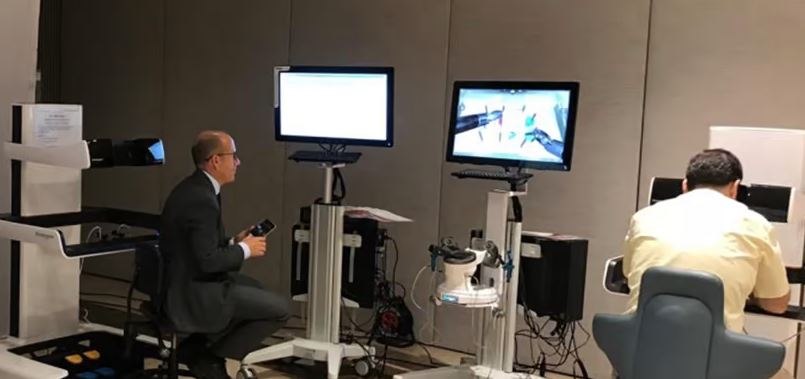Customer Company Size
Large Corporate
Region
- America
Country
- United States
Product
- OmniCube
Tech Stack
- VMware vCenter
- Amazon AWS cloud
Implementation Scale
- Enterprise-wide Deployment
Impact Metrics
- Cost Savings
- Productivity Improvements
Technology Category
- Infrastructure as a Service (IaaS) - Cloud Computing
Applicable Industries
- Education
Applicable Functions
- Business Operation
Services
- System Integration
About The Customer
Based in Worcester, Massachusetts, Worcester Polytechnic Institute (WPI) is one of the oldest engineering and technical universities in the United States. Among the hundreds of universities in the Boston area, WPI is unique with its center of excellence in engineering, science, technology, and mathematics, along with strong academic and co-curricular programs in the arts and humanities, the social sciences, and business. The university, ranked 62 for National Universities in the 2014 Top 100 Best Colleges by US News & World Report, prides itself on its academic core values, innovation in science and technology, and strong community. The IT staff at WPI maintains skills in a wide variety of infrastructure domains from servers, networking, and storage as well as Windows and UNIX application development and application delivery. Like many IT organizations, the IT staff had to be very efficient to handle all the application and infrastructure requests from the approximately 5000 students and faculty in the community.
The Challenge
Worcester Polytechnic Institute (WPI), a top-ranked national engineering and technical university, faced an information technology challenge of rolling out a set of new applications based on requests from the university's broad community of faculty, staff, and students. The university's IT Hosting team was looking to create 'Infrastructure as a Service' for the wide set of application requests coming from the student body, faculty, and staff at WPI. Critical requirements like 'always on' availability, agile deployment models, and ease of use and maintainability were foundational requirements to the IT team. The existing infrastructure was running on complex, expensive racks of legacy servers with networked storage provided by a Dell SAN, but the configuration was becoming expensive and difficult to scale and maintain, making it challenging to meet the new application demands. This new application initiative was of concern to the IT team because of the time it would take to expand and maintain the legacy systems, which lacked easy, horizontal scalability, integrated data efficiency, automation, and unified management. They foresaw wasted operations time managing the legacy systems that could be spent more productively on other, higher value IT initiatives.
The Solution
The IT Hosting team, under Associate CIO Jon Bartelson's leadership, chose SimpliVity's OmniCube for its new modern IT infrastructure because it was the only solution to meet all of the hyperconverged infrastructure requirements. The university's IT team was impressed with OmniCube's simple, 'datacenter-in-a-box' concept, its ability to run a wide set of application workloads, deliver 'pay-as-you-grow' horizontal scale-out, revolutionary inline deduplication, compression, optimization of all application data, and provide simple, unified management from within VMware vCenter. With OmniCube, WPI and the Hosting team found the perfect hyperconverged infrastructure solution to run the new set of applications. Now, WPI can implement powerful, policy-based data protection with replication and disaster recovery capabilities that significantly improves application service level agreements (SLAs). Included in OmniCube's hyperconverged architecture is built-in inline deduplication, which delivers IO savings and optimizes storage consumption. Because WPI had a small Hosting Services staff and couldn't afford to tie up resources with a complex deployment, OmniCube's fast installation and implementation was also a true advantage. In addition, OmniCube's scale-out design will enable the university to easily expand the use of the system in the future without a forklift upgrade.
Operational Impact
Quantitative Benefit

Case Study missing?
Start adding your own!
Register with your work email and create a new case study profile for your business.
Related Case Studies.

Case Study
Revolutionizing Medical Training in India: GSL Smart Lab and the LAP Mentor
The GSL SMART Lab, a collective effort of the GSL College of Medicine and the GSL College of Nursing and Health Science, was facing a challenge in providing superior training to healthcare professionals. As clinical medicine was becoming more focused on patient safety and quality of care, the need for medical simulation to bridge the educational gap between the classroom and the clinical environment was becoming increasingly apparent. Dr. Sandeep Ganni, the director of the GSL SMART Lab, envisioned a world-class surgical and medical training center where physicians and healthcare professionals could learn skills through simulation training. He was looking for different simulators for different specialties to provide both basic and advanced simulation training. For laparoscopic surgery, he was interested in a high fidelity simulator that could provide basic surgical and suturing skills training for international accreditation as well as specific hands-on training in complex laparoscopic procedures for practicing physicians in India.

Case Study
IoT platform Enables Safety Solutions for U.S. School Districts
Designed to alert drivers when schoolchildren are present, especially in low-visibility conditions, school-zone flasher signals are typically updated manually at each school. The switching is based on the school calendar and manually changed when an unexpected early dismissal occurs, as in the case of a weather-event altering the normal schedule. The process to reprogram the flashers requires a significant effort by school district personnel to implement due to the large number of warning flashers installed across an entire school district.

Case Study
Implementing Robotic Surgery Training Simulator for Enhanced Surgical Proficiency
Fundacio Puigvert, a leading European medical center specializing in Urology, Nephrology, and Andrology, faced a significant challenge in training its surgical residents. The institution recognized the need for a more standardized and comprehensive training curriculum, particularly in the area of robotic surgery. The challenge was underscored by two independent studies showing that less than 5% of residents in Italian and German residency programs could perform major or complex procedures by the end of their residency. The institution sought to establish a virtual reality simulation lab that would include endourological, laparoscopic, and robotic platforms. However, they needed a simulator that could replicate both the hardware and software of the robotic Da Vinci console used in the operating room, without being connected to the actual physical console. They also required a system that could provide both basic and advanced simulation training, and a metrics system to assess the proficiency of the trainees before they performed surgical procedures in the operating theater.

Case Study
Edinburgh Napier University streamlines long-distance learning with Cisco WebEX
• Geographically dispersed campus made in-person meetings costly and inconvenient.• Distance-learning programs in Malaysia, India, and China required dependable, user-friendly online tools to maximize interaction in collaborative workspaces.• Virtual learning environment required a separate sign-in process, resulting in a significant administrative burden for IT staff and limited adoption of collaboration technology.

Case Study
8x increased productivity with VKS
Before VKS, a teacher would spend a lot of time showing a group of 22 students how to build a set of stairs within a semester of 120 hours. Along with not leaving the teacher much time to provide one-on-one support for each student to properly learn carpentry, it also left a considerable amount of room for error. Key information would be misinterpreted or lost as the class was taught in the typical show-and-tell way.

Case Study
Scalable IoT Empowering GreenFlex's Sustainable Growth
GreenFlex, a company that supports sustainable development, decarbonization, and energy efficiency, faced several challenges in its quest to expand its business. The company needed to deploy a robust and sustainable IoT technology to support its growth. It was crucial for them to monitor and control devices at customer sites in a safe and reliable manner. They also needed to integrate devices across a range of communication protocols and gather and act on data to meet efficiency targets. GreenFlex had previously built IoT capabilities into its digital platform, GreenFlexIQ, to monitor and manage customer sites remotely. However, they soon realized that they needed a new platform to support their ambitions. They needed a platform that could scale to connect more devices for production management and make it easier for the operations team to manage devices in the field.




---nyse--hpe_1.jpg)


